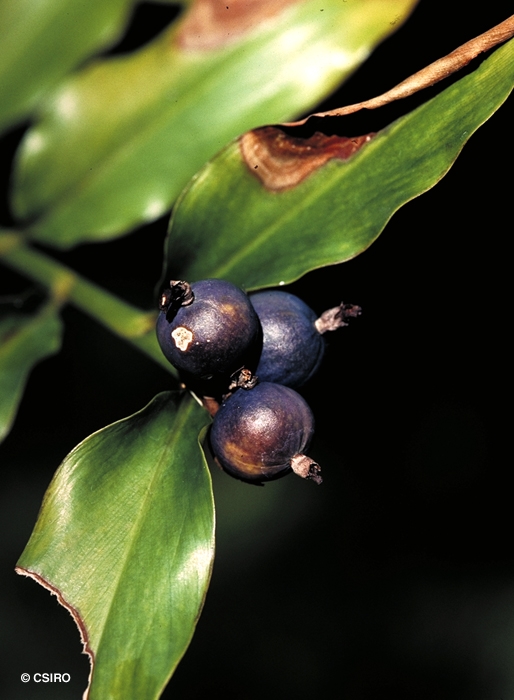Australian Tropical Rainforest Plants - Online edition
Alpinia hylandii R.M.Sm.





Smith, R.M. (1980) Notes from the Royal Botanic Garden, Edinburgh 38 : 523. Type: Queensland, CSIRO, Forest Research Station, Atherton, in cultivation, from Hyland 8655 ex SFR 1073 , 16 Jan. 1978, Hyland 9630; holo: E; iso: QRS.
Ginger, Slender; Slender Ginger
Usually flowers and fruits as a shrubby plant about 1 m tall, occasionally taller, but it should be noted that only the leaves are above ground level. The true stem is below the soil surface.
Leaf blades lanceolate, about 10-16 x 2-4 cm (lowest leaves smaller), glabrous, shortly petiolate, ligule up to 0.5 cm long, truncate or slightly bilobed at the apex, base or the petiole sheathing the stem. Leaf blade margin sinuate, intramarginal vein very close to the edge and difficult to distinguish from the margin of the leaf blade.
Inflorescence terminal, glabrous, about 2-3 cm long. Bracts narrowly triangular, about 15-20 mm long, each subtending a pair of flowers. Bracteoles about 4-6 cm long, pedicels to 1 mm long. Calyx about 4-6 mm long. Corolla tube about 4-6 mm long, lobes 5-7 mm long. Labellum about 4 x 5-6 mm. Anther about 3 mm long without a crest, filament about 2.5 mm long. Ovary about 2 mm long, glabrous.
First true leaf cordate or ovate, about 15-18 mm long, petiole about as long as the leaf blade and sheathing the stem. At the tenth leaf stage: leaves lanceolate, petiolate, glabrous. Sheathing leaf base glabrous, ligule glabrous except perhaps for the bilobed upper margin. Leaf blade about 9-12 x 2-3 cm. Seed germination time 59 to 66 days.
Endemic to NEQ. Altitudinal range from 400-1000 m. Grows as an understory shrub in undisturbed upland and mountain rain forest. This species appears to be restricted to drier types of rain forests, often associated with Kauri Pine (Agathis robusta). Usually found on deep soils on granite.
This small clumping ginger makes a good potted plant for indoor use.





